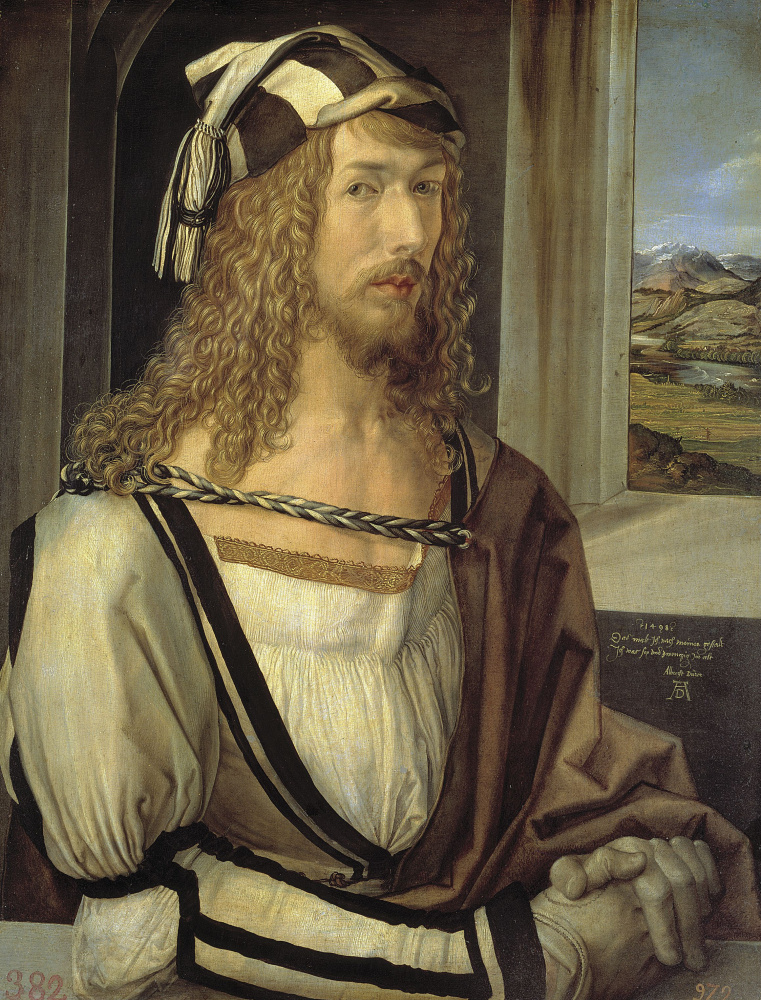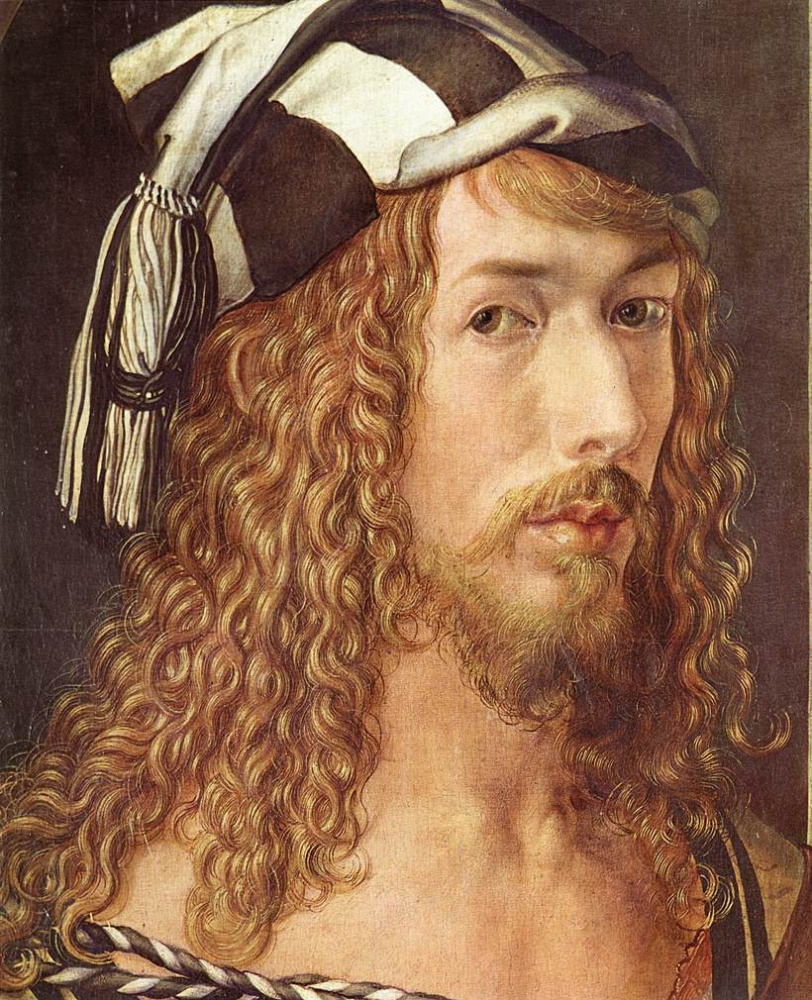Self-portrait
Description of the artwork «Self-portrait»
“I wrote this from myself. I was 26 years old. Albrecht Dürer ”(Das malt ich nach meiner gestalt / Ich war sex und zwenzig Jor alt / Albrecht Dürer). By this age, Dürer not only got married, but also became famous, not only matured, but also managed to realize himself as a great artist, a universal personality, for whom the framework of his hometown became cramped, since now Dürer needs the whole world. In this self-portrait from the Prado, in the very gaze of Dürer, in his calm and confident posture and in the way his hands rest on the parapet, there is a special, conscious dignity.
Dürer, at the time of writing the self-portrait, had recently returned from his second trip to Italy. In the north of Europe, he is widely known as an excellent engraver, whose cycle "Apocalypse", printed in the printing house of his godfather Anton Koberger, sold out in huge numbers.
In Italy, this cradle of art, Dürer is maliciously copied, and he sues the manufacturers of forgeries, defending his honest name, and also proves to doubting Italians that he is as magnificent in painting as in engraving by painting a picture "Holiday of the rosary".
This self-portrait is a kind of declaration that Dürer is no longer a craftsman (and in his native Nuremberg, artists are still considered representatives of the artisan class) - he is an artist, and therefore, God's chosen one.
This is the self-awareness not of a medieval master, but of a Renaissance artist. Dürer, not without a challenge, portrays himself in an Italian dress, refined and expensive: his gathered shirt of white silk is decorated with golden embroidery at the collar, wide black stripes on a cap with tassels rhyme with black contrasting clothing, a brown cape made of heavy expensive fabric is held at the level of the collarbones a braided cord threaded into the eyelets. Dürer has acquired a dandy beard, from which, it seems, still smells of Venetian perfume, and his golden-red hair is carefully curled, which causes ridicule among pragmatic compatriots.
In Nuremberg, his wife or mother hid such his outfits in a chest: as a representative of the artisan class, Dürer, as biographers write, had no right to allow himself such a defiant luxury. And with this self-portrait, he polemically declares: the artist is not a craftsman, his position in the social hierarchy is much higher. His fine kid gloves of fine workmanship cry about the same.
"White gloves, also brought from Italy," writes Durer's biographer Stanislav Zarnitsky, "hide the worker's honest hands, covered with abrasions, cuts, and stains of ingrained paint." His gloves are a symbol of his new status. An expensive costume in Venetian fashion and a mountain landscape outside the window (a tribute to the mentor Giovanni Bellini) - all indicate that Durer no longer agrees to consider himself a provincial artisan, limited by the conventions of time and space.
Material about Dürer's self-portraits read in Arthive and watch the video





